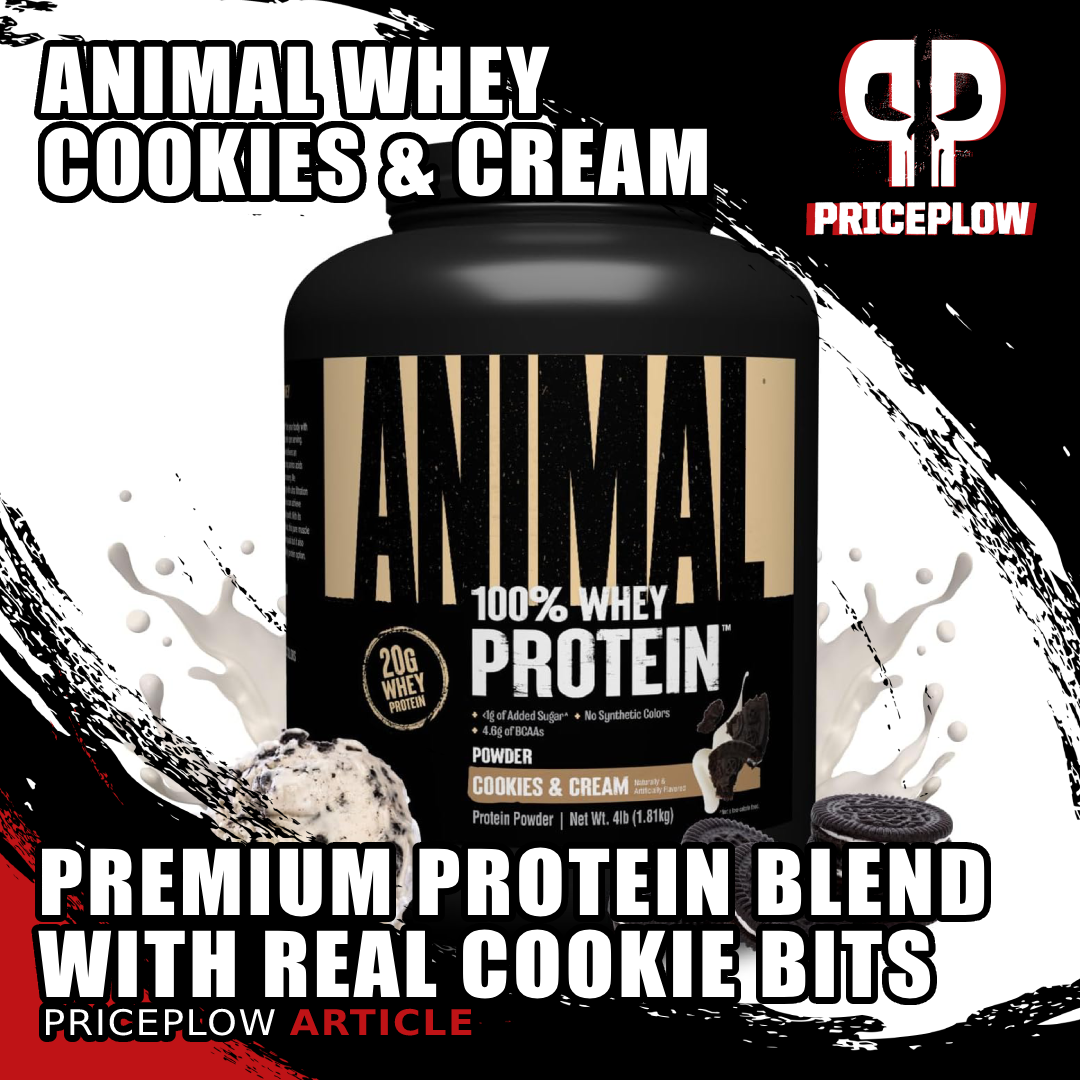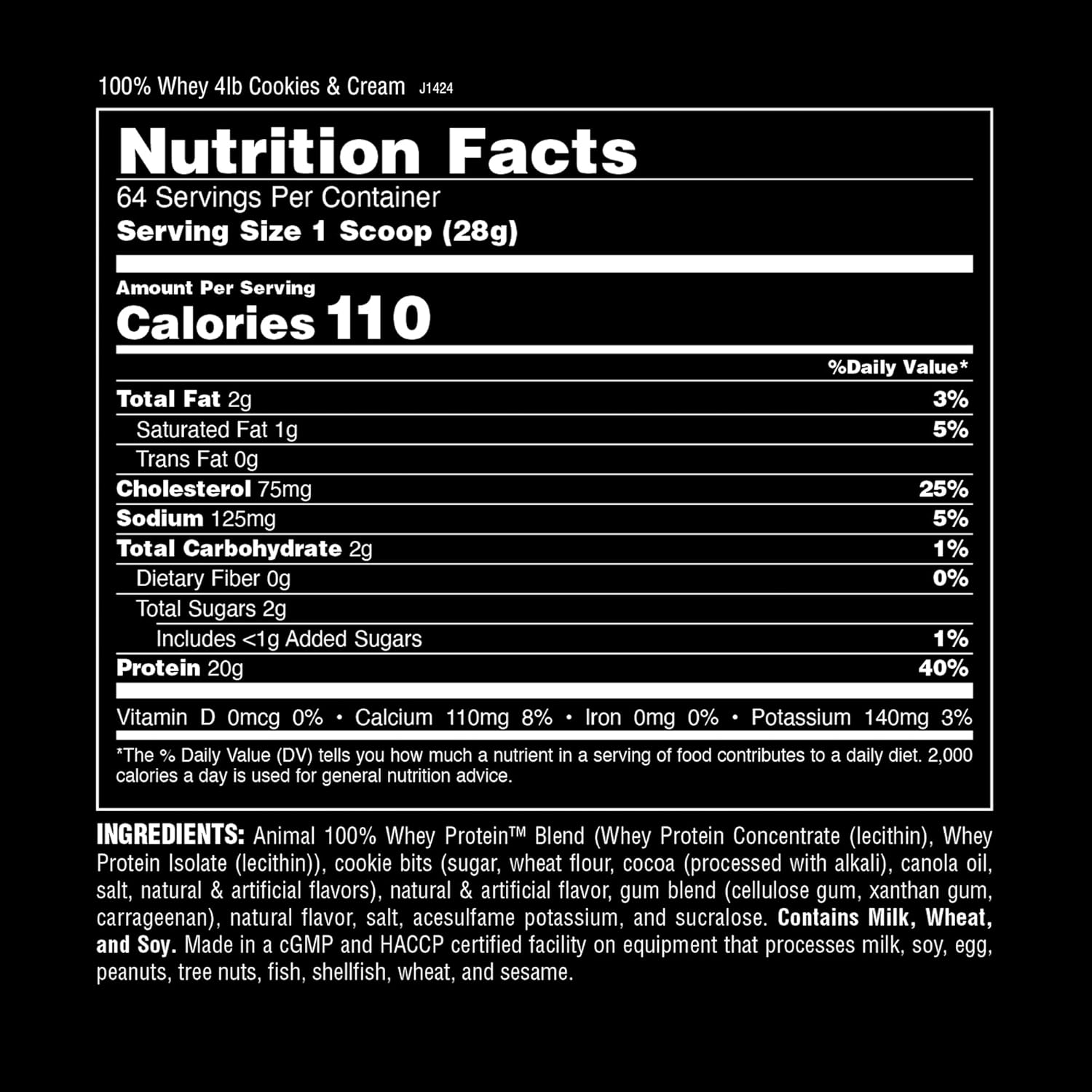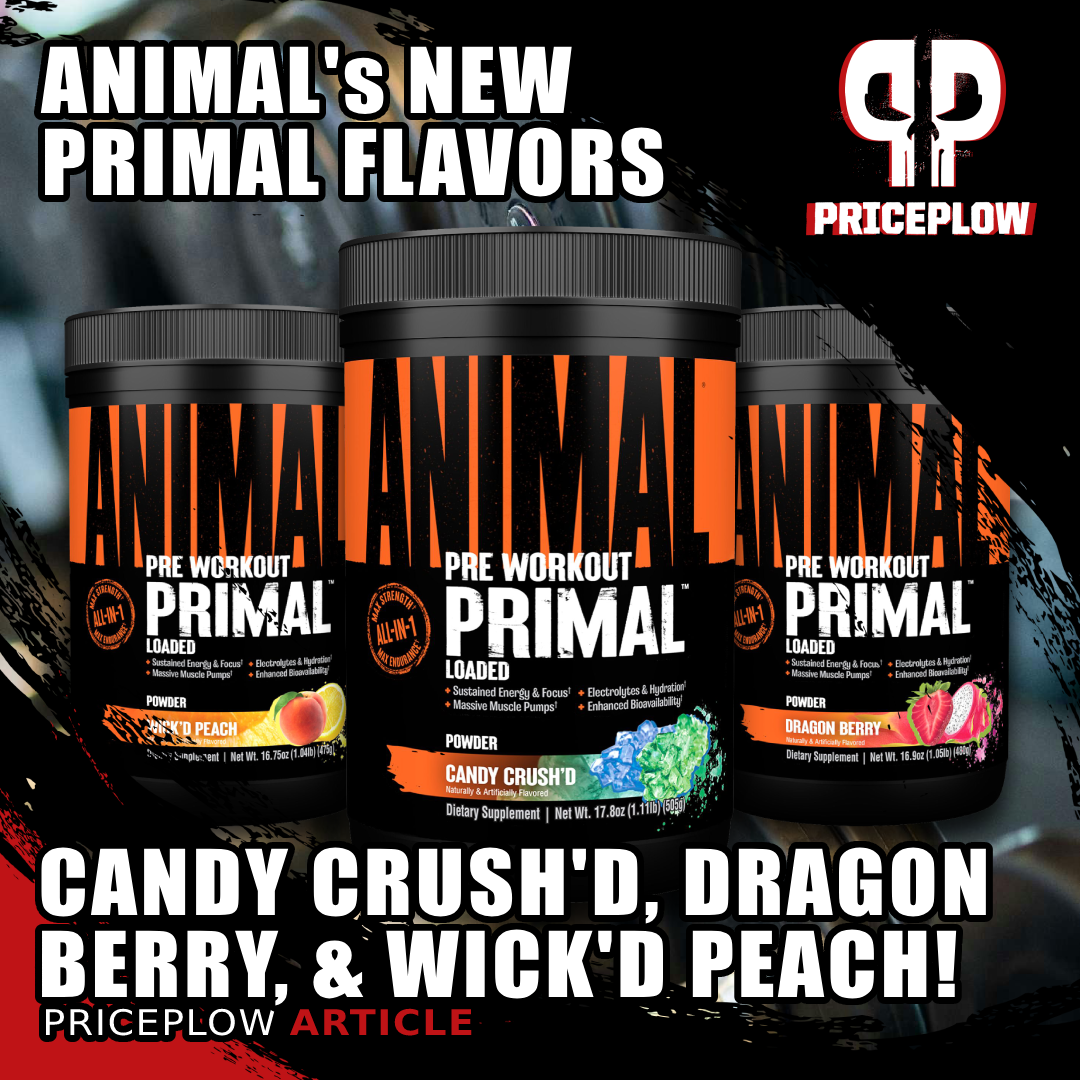
Animal Whey returns with new Cookies & Cream, delivering real cookie pieces in a premium protein blend! 20g protein, just 2g carbs/fat per scoop, and a perfectly balanced shake texture.
Animal Whey is back in the spotlight with its latest flavor release, Cookies & Cream. Nearly a decade after our original coverage in 2015, it's time to fast forward and give this legendary protein powder a fresh analysis -- and the timing couldn't be better.
Animal's been on an absolute tear lately, and 2024's going to end as great as it started. From bringing back The Cage to the Arnold Sports Festival (where we had the privilege of podcasting live with Jason Budsock and Rudy Checo), to running the mind-bending Animal Strength Challenge that saw some of the most creative and powerful lifts we've ever witnessed.
Meanwhile, Animal Primal continues to crush the pre-workout scene, with three new Primal flavors (Candy Crush, Dragon Berry, and Wick'd Peach) rolling out to match its explosive performance formula.
But let's get back to Animal Whey, a product we first discussed with Jason Budsock way back in Episode #080 of the PricePlow Podcast. It's about time we gave this protein the 2024 treatment it deserves, starting with that new Cookies & Cream flavor that's got everyone talking.
How does it hold up? Let's dive in, but first, sign up for our Animal news alerts and check prices on Animal Whey below:
Universal Animal 100% Whey Protein – Deals and Price Drop Alerts
Get Price Alerts
No spam, no scams.
Disclosure: PricePlow relies on pricing from stores with which we have a business relationship. We work hard to keep pricing current, but you may find a better offer.
Posts are sponsored in part by the retailers and/or brands listed on this page.
Animal Whey Nutrition Facts
Flavors may vary, but here's what's in a 28g scoop of Cookies & Cream Animal Whey:
-
Calories: 110
-
Protein: 20g
-
Total Fat: 2g
-
Total Carbohydrate: 2g
-
Total Sugars: 2g
-
Why Protein?
Before diving into Animal's protein blend, it's worth noting why we're all here in the first place: High-protein diets are consistently shown to improve body composition, strength, and overall health outcomes.[1] They're effective in part because protein increases satiety,[2] has a higher thermic effect than other macronutrients,[3] and supports an optimal hormonal environment.[1]
Most Animal fans know this already though -- so let's get into it:
Animal Whey Ingredients
Each 28g serving provides the following:
-
Animal 100% Whey Protein Blend
While whole food protein sources should form the foundation of your diet, protein powders make hitting your daily targets much more convenient.[4] This is where Animal Whey comes in, with its premium blend of whey proteins.
The 2024 Animal Strength Challenge winners are here! Blake Lehew amazed with an 870lb deadlift, Jen Hazzard stunned with a 520lb pull at 133lbs, and Ben Galper wowed with a gravity-defying stunt. Strength, creativity, and heart on full display!
The foundation of Animal Whey is a combination of whey protein concentrate and whey protein isolate. This blend provides a perfect balance of fast-digesting protein fractions that has been repeatedly shown to support muscle growth and recovery.[5]
Whey protein isolate undergoes additional processing to achieve at least 90% protein by weight, resulting in very low levels of fats and lactose.[6] Meanwhile, whey protein concentrate contains between 35-80% protein by weight and retains more of the beneficial biological fractions, though it also contains slightly more fats and lactose.[5]
By combining both forms, Animal Whey delivers a protein powder that's both high in protein while maintaining the full spectrum of whey's beneficial compounds. This is particularly evident in the macronutrient profile, where each serving provides 20 grams of protein while keeping fats and carbohydrates low.
-
Cookie Bits (Cookies & Cream Flavor)
Animal has included actual crushed cookie pieces in this formula, made with sugar, wheat flour, cocoa (processed with alkali), canola oil, salt, and natural & artificial flavors. Rather than just relying on flavoring alone, these real cookie pieces help create an authentic cookies & cream experience. And even with the inclusion of real cookies, Animal manages to keep the macros in check with just 2g of total sugars per serving.
-
Gum Blend (Cellulose Gum, Xanthan Gum, Carrageenan)
Animal uses a three-pronged approach to their gum blend, each serving a unique purpose in the formula. Cellulose gum helps provide structure and acts as a stabilizer, preventing the protein from settling at the bottom of your shaker. Xanthan gum adds thickness and a smooth mouthfeel, while also helping to suspend the cookie pieces throughout the shake. Carrageenan, derived from red seaweed, rounds out the blend by improving the overall texture and preventing separation of the ingredients.
Animal Primal just dropped 3 new flavors: Candy Crush, Dragon Berry, and Wick'd Peach! Designed for elite performance with 3DPUMP, taurine, tyrosine, and choline, these flavors bring a fresh twist to a solid pre-workout formula.
Together, this trio of thickeners ensures that your protein shake maintains its consistency from the first sip to the last, with an enjoyable, shake-like texture that's neither too thin nor too thick.
-
Additional Ingredients
To round out the formula, Animal Whey includes natural & artificial flavors, salt, acesulfame potassium (Ace-K), and sucralose. The dual sweetener system is tuned to provide a balanced, clean-tasting shake that hits the sweet spot without any lingering artificial aftertaste.
Salt serves both as a flavor enhancer and electrolyte source, helping to bring out the cookie flavoring while supporting hydration. The overall combination of sweeteners and flavorings complements the real cookie pieces while keeping the total sugars at just 2g per serving.
It's worth noting that the product is manufactured in a cGMP and HACCP certified facility that also processes milk, soy, egg, peanuts, tree nuts, fish, shellfish, wheat, and sesame - important information for those with allergies or sensitivities to consider.
Flavors Available
Here's an up-to-date list of all flavors of Animal Whey:
Conclusion: Animal Whey Keeps Getting Better
2024 has been an incredible year for Animal so far. From the triumphant return of The Cage at the Arnold Sports Festival to the mind-bending feats witnessed during the Animal Strength Challenge, the brand continues to demonstrate why it's remained a titan in the supplement industry for over four decades.

Animal brings THE CAGE Back to The Arnold Expo, and Mike and Ben record a podcast with Jason Budsock and Rudy Checo to celebrate the start of the weekend.
Animal Whey perfectly embodies this commitment to excellence. The protein blend delivers a powerful combination of whey protein isolate and concentrate, providing 20 grams of high-quality protein per serving while keeping both fats and carbs in check. The addition of real cookie pieces in this new Cookies & Cream flavor shows Animal's dedication to authenticity - delivering genuine taste without compromising on macros.
This attention to detail extends through every aspect of the formula, from the three-stage thickening system that ensures the perfect shake consistency to the carefully balanced sweetener blend. Even seemingly minor touches like the addition of salt for electrolyte support demonstrate Animal's thorough approach to formulation.
For anyone seeking a premium protein powder that doesn't cut corners, Animal Whey continues to prove why it's earned its reputation in an increasingly crowded market. With Animal's recent string of successes - from the explosive popularity of Animal Primal's new flavors to their community-building events - this iconic protein powder remains as relevant and effective as ever.
Make sure you're signed up for our Animal news alerts and check prices on PricePlow:
Universal Animal 100% Whey Protein – Deals and Price Drop Alerts
Get Price Alerts
No spam, no scams.
Disclosure: PricePlow relies on pricing from stores with which we have a business relationship. We work hard to keep pricing current, but you may find a better offer.
Posts are sponsored in part by the retailers and/or brands listed on this page.





Comments and Discussion (Powered by the PricePlow Forum)